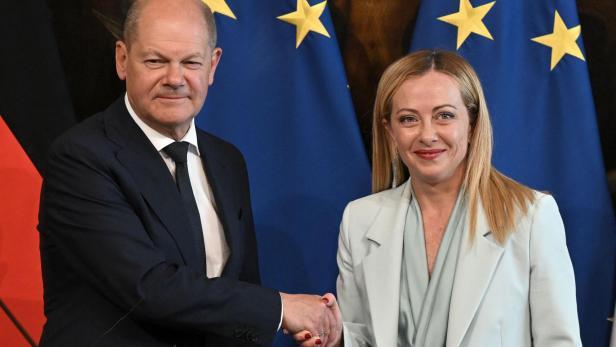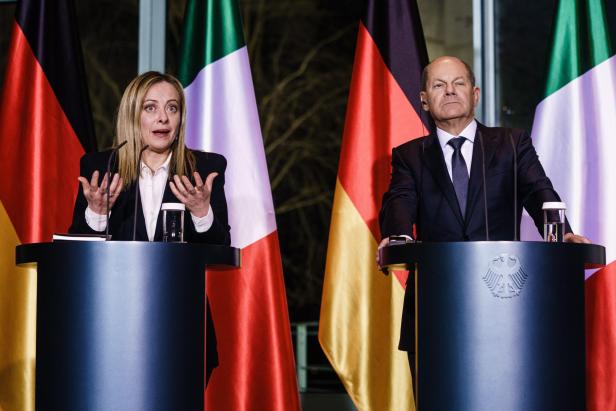
© APA/AFP/TIZIANA FABI / TIZIANA FABI
The pipeline is expected to bring ten million tons of hydrogen to Europe by 2030. Scholz and Meloni sign the plan today, Wednesday.
The governments of Germany and Italy want to push ahead with the construction of a hydrogen pipeline from North Africa to southern Germany. This emerges from the “German-Italian action plan for strategic bilateral and EU cooperation,” which is available to the Reuters news agency. Germany’s Chancellor Olaf Scholz and the Italian Prime Minister Giorgia Meloni want to sign it on Wednesday on the sidelines of the joint government consultations in Berlin.
It emphasizes that the two large EU states want to promote the diversification of energy supplies and achieve the construction of new natural gas and hydrogen pipelines between Germany and Italy (via Austria and/or Switzerland).
➤ Read more: Where the hydrogen for the energy transition should come from
This particularly affects the “South Central Hydrogen Corridor” (SCHC), which connects the southern parts of Germany and Italy with North Africa. The aim of the SCHC is to expand the cross-border gas pipeline infrastructure and the import of ten million tons of hydrogen by 2030 to enable.

Germany’s Chancellor Olaf Scholz and Italian Prime Minister Giorgia Meloni will meet in Berlin today, Wednesday.
© Image: EPA / CLEMENS BILAN
“The corridor also offers enormous opportunities for the import of renewable energy from North Africa and connects demand centers in Italy, Germany, Austria and Switzerland, contributing to the emergence of a larger European hydrogen network,” the German-Italian statement said. To achieve this goal, Germany and Italy also want to promote the production of renewable energies, natural gas and hydrogen in North Africa. However, production must be in line with socio-economic and ecological standards. Scholz and Meloni had already discussed the project in June during the Chancellor’s visit to Rome.
➤ Read more: Where the hydrogen for the energy transition should come from
In the 20-page declaration, the topic of migration is dealt with rather briefly. The existing six-monthly consultation mechanism is to be expanded. Closer coordination is also being sought within the framework of the new EU pact on migration and asylum “as well as in possible joint projects and EU cooperation with third countries of origin and transit”.
Well-informed anytime, anywhere
Secure unrestricted access to all digital content from KURIER: Plus content, ePaper, online magazines and more. Try your KURIER digital subscription now.








